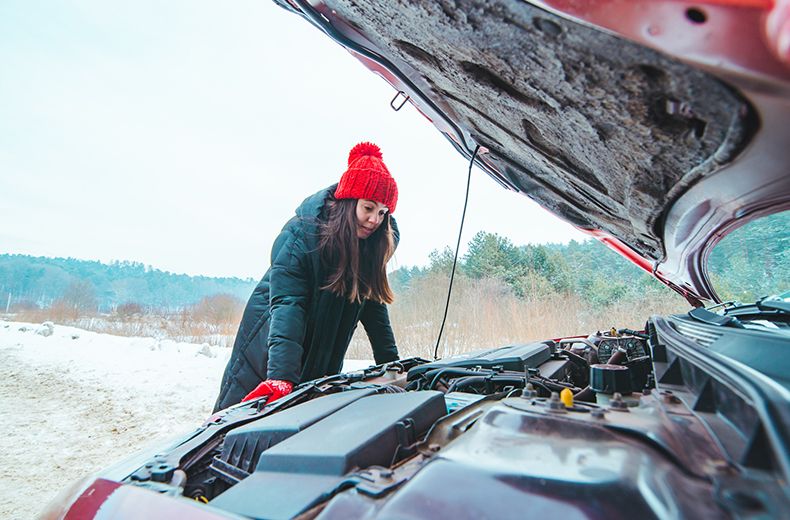The icy grip of winter is upon us, and with it comes the dreaded scenario: your car refuses to start, leaving you stranded in the cold. Fret not! This comprehensive guide will equip you with the knowledge to conquer this automotive adversity and get your engine humming in no time.

Image: carfromjapan.com
Unveiling the Culprits: Why My Car Won’t Start in the Cold?
When temperatures plummet, several factors conspire to hinder your car’s ability to start. A sluggish battery, thickened oil, and frozen fuel lines are the usual suspects. Let’s delve into each culprit and their impact:
Battery’s Winter Woes:
Cold weather saps the life out of car batteries. Chemical reactions slow down, reducing the battery’s capacity to generate the necessary electrical power for ignition. The result? A lack of sufficient cranking power when you turn the key.
Oil Thickens, Engine Complains:
As temperatures drop, engine oil thickens, impeding its flow. This sluggish circulation prevents the oil from effectively lubricating the moving parts of the engine. The increased resistance leads to difficulties in turning the engine over.

Image: carglassadvisor.com
Frozen Fuel Flow:
Fuel, particularly diesel, can freeze in frigid temperatures. This ice formation obstructs fuel delivery, preventing it from reaching the engine. As a consequence, your car will be starved of the vital fuel it needs to ignite.
Combating the Cold: Expert Tips for Starting Your Car
Armed with an understanding of the root causes, let’s explore ingenious solutions to get your car up and running even in the face of icy challenges:
Battling Battery Blues:
Invest in a cold-weather battery specifically designed to withstand the harsh conditions of winter. Regularly check your battery’s terminals for corrosion. If your battery is weak, don’t hesitate to get a jumpstart from another vehicle.
Taming Thickened Oil:
Use an engine oil formulated for cold temperatures. This will ensure the oil flows effortlessly, providing adequate lubrication and reducing resistance when starting the engine.
Melting Frozen Fuel:
If you suspect frozen fuel lines, park your car in a warm place to allow the ice to thaw. Avoid using an open flame or heater to thaw the fuel, as it can be dangerous. Alternatively, pour hot (not boiling) water over the fuel lines to melt the ice. Don’t forget to protect your hands with gloves.
Frequently Asked Questions on Starting Woes
- Q: Why does my car start immediately after jumpstarting but stalls when I disconnect the jumper cables?
A: Your battery may be unable to hold a charge. Consider replacing it. - Q: What if I don’t have jumper cables or anyone to give me a jumpstart?
A: Call roadside assistance or a towing service for professional help. - Q: Can I use a battery charger to revive my car battery at home?
A: Yes, but make sure to follow the manufacturer’s instructions carefully.
How To Fix Car Not Starting In Cold
Conclusion: Embracing the Wintery Challenge
Conquering the challenge of starting your car in the cold requires a combination of knowledge and preparation. By understanding the underlying causes and implementing the expert tips outlined above, you can tame the icy grip of winter and ensure your vehicle remains a reliable companion throughout the season.
Are you still curious about other secrets that can help your car handle the frosty onslaught of winter? Leave a comment below, and let’s explore the topic further.